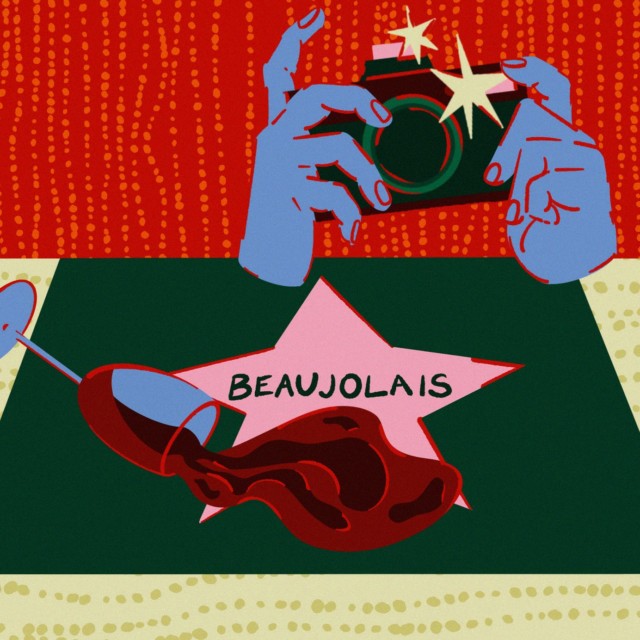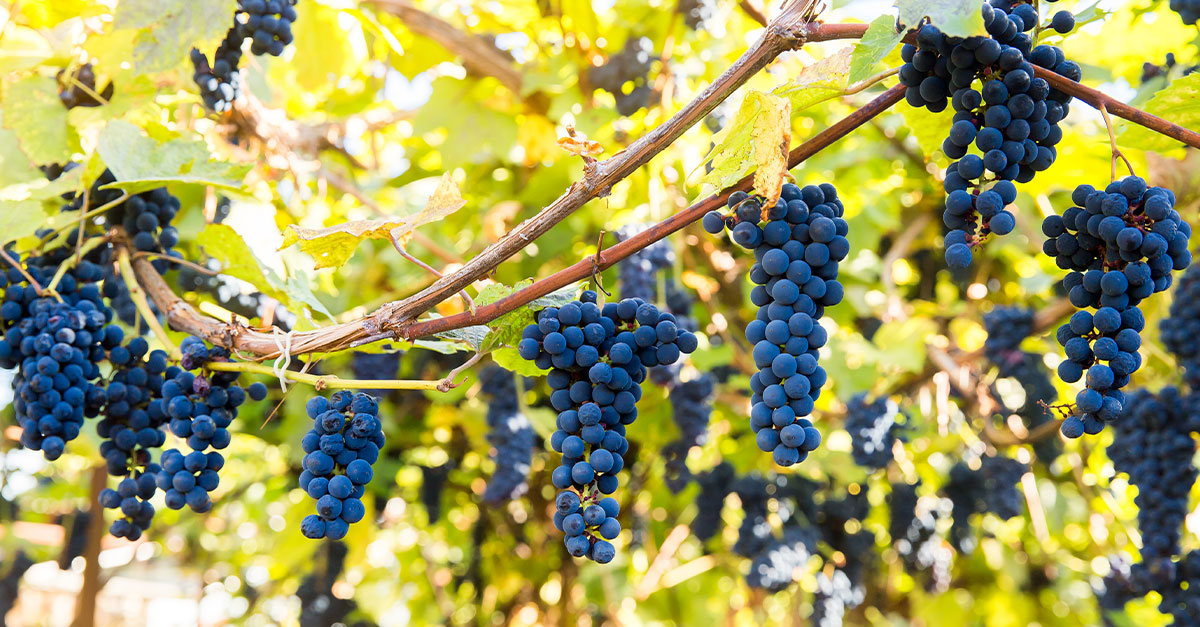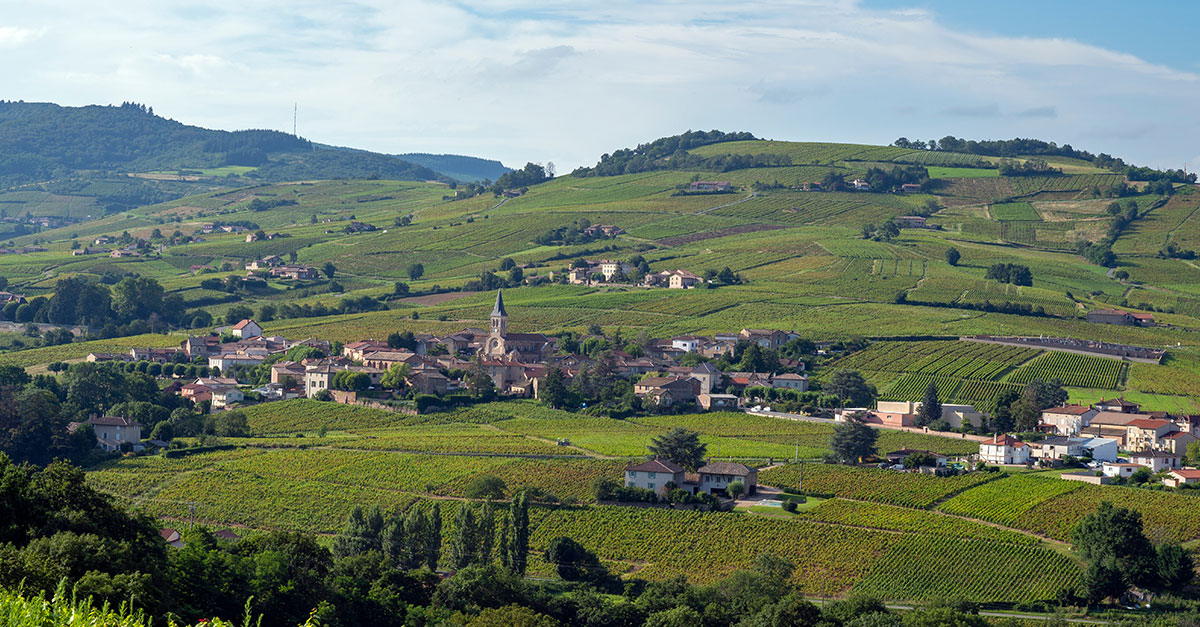Wine is similar to fashion. Some styles seem to have their moment in the sun, when everyone wants them. And then, inexplicably, they are out of favor. But there’s also the rotation of interest that comes from necessity: Something gets discovered, it’s a great value, more people hear about it, the demand goes up, limited supply forces prices to rise, and suddenly it disappears from circulation. As a result, those at the coal face of the wine world are always looking for the next discovery: wines that excite, but are affordable enough for all to enjoy. And now that cru Beaujolais is more popular than ever — and more expensive as a result — what will be the next darling of the wine world?
Before we get to what’s next, though, let’s explore briefly how we got here. The rise of cru Beaujolais has been remarkable. Beaujolais, a scenic region of rolling hills sandwiched between Burgundy and Lyon, had for a while been in a bit of a crisis. Back in the 1970s it achieved some level of fame for Beaujolais Nouveau. At a time when most wine was from the Northern hemisphere, there was a real buzz about tasting the first offering from the most recent harvest, and Beaujolais fit that bill, rushed to bottle and then to market on Nouveau Day in November, two months after the grapes were picked. But these wines had little to offer aside from their novelty, and the region came to be seen merely as a source of cheap, light, inconsequential reds. Prices were low and growers struggled. With the emergence onto the market of other fruit-forward, inexpensive wines from the Southern Hemisphere, the raison d’être of Beaujolais’ most famous export — and by extension all Beaujolais — was called into question.
But its fortunes have changed. Beaujolais is unusual among wine regions in that it is almost entirely defined by one grape variety: Gamay. Just 3 percent of the region is planted to Chardonnay, the rest is Gamay Noir à Jus Blanc, to give it its full name. Fortunately, Gamay is a grape variety whose time has come. With increasing acceptance of lighter-style red wines among the sommelier community and the wine drinking public at large, Gamay is suddenly a star variety. While it has always been seen as a lesser grape to Pinot Noir in France — and famously in 1395 when Philip the Bold banned it from the Côte d’Or calling it a most disloyal variety — elsewhere in the wine world hipster somms would now far rather pull a Gamay from the shelf than Pinot Noir.
Cru Beaujolais — Gamay wines made from one of the ten crus in the north of the region — is now firmly established as desirable. And although it still represents good value, it has risen in price and, more notably, availability of the best wines is stretched to the point that it’s getting hard to find them. Their success has forged a bridgehead through which other previously lesser-known or niche wines can pass, though. So what’s next, following on the success of cru Beaujolais? What will be the next darling of the switched-on somm community? I have four suggestions.
País
Also known as Mission, Criolla Chica, and Listán Prieto, País is the original grape variety that found its way to the Americas back in the 16th century. Its talent is for healthy yields of grapes that make a light red wine, and until recently it was mainly used to make cheap generic jug wine. But with the rise of natural wine and the fashion for lighter reds, winegrowers in the south of Chile have realized they are sitting on a fabulous resource of old País vines. The results are often convincing, almost always delicious, and attractively priced.
Langhe Nebbiolo
In Piemonte, Barolo and Barbaresco are famous wines, and they are invariably expensive. But Langhe Nebbiolo is often of superb value, and the ones I’ve tasted of late are very smart wines. Langhe Nebbiolo isn’t exactly a secret, but it deserves more attention, and these are wines that often offer the thrills of the more famous wines from the region at sensible prices.
Palhete/Clarete
In Portugal and Spain, there’s a group of wines that represent a wonderful halfway point between white and red, known alternately as Palhetes or Claretes. Made by co-fermenting red and white grapes, the result is pale red wines that are darker than rosé, but aren’t fully red wines. In the past, these used to be cheap wines for agricultural workers, and then they all but disappeared. But among skin-fermented whites (orange or amber wines, as they are often known) the Claretes and Palhetes are making a comeback.
Cinsault
The final candidate is another grape variety, Cinsault. It yields generously, and is superbly well adapted to warm, dry climates, where it produces hefty bunches of large berries. Its lighter-colored red wines have a lovely freshness, but it’s also a useful blending component. The hotspot for Cinsault is in South Africa, where a lot used to be planted. There’s not so much there now — it fell out of favor — but there’s still some, and it’s in demand. It hasn’t really taken off as a standalone variety in the South of France, where there’s quite a bit, but watch this space.


